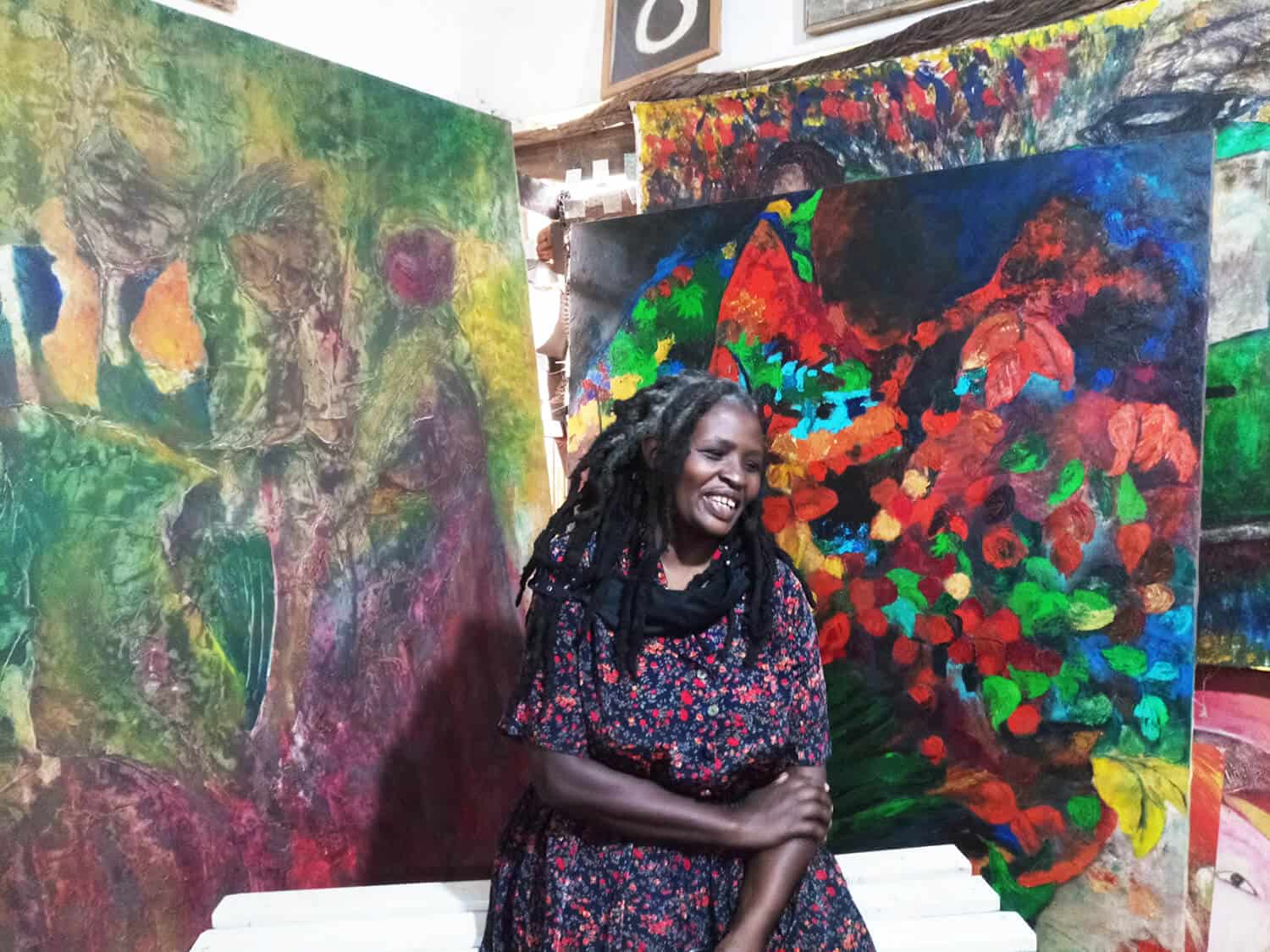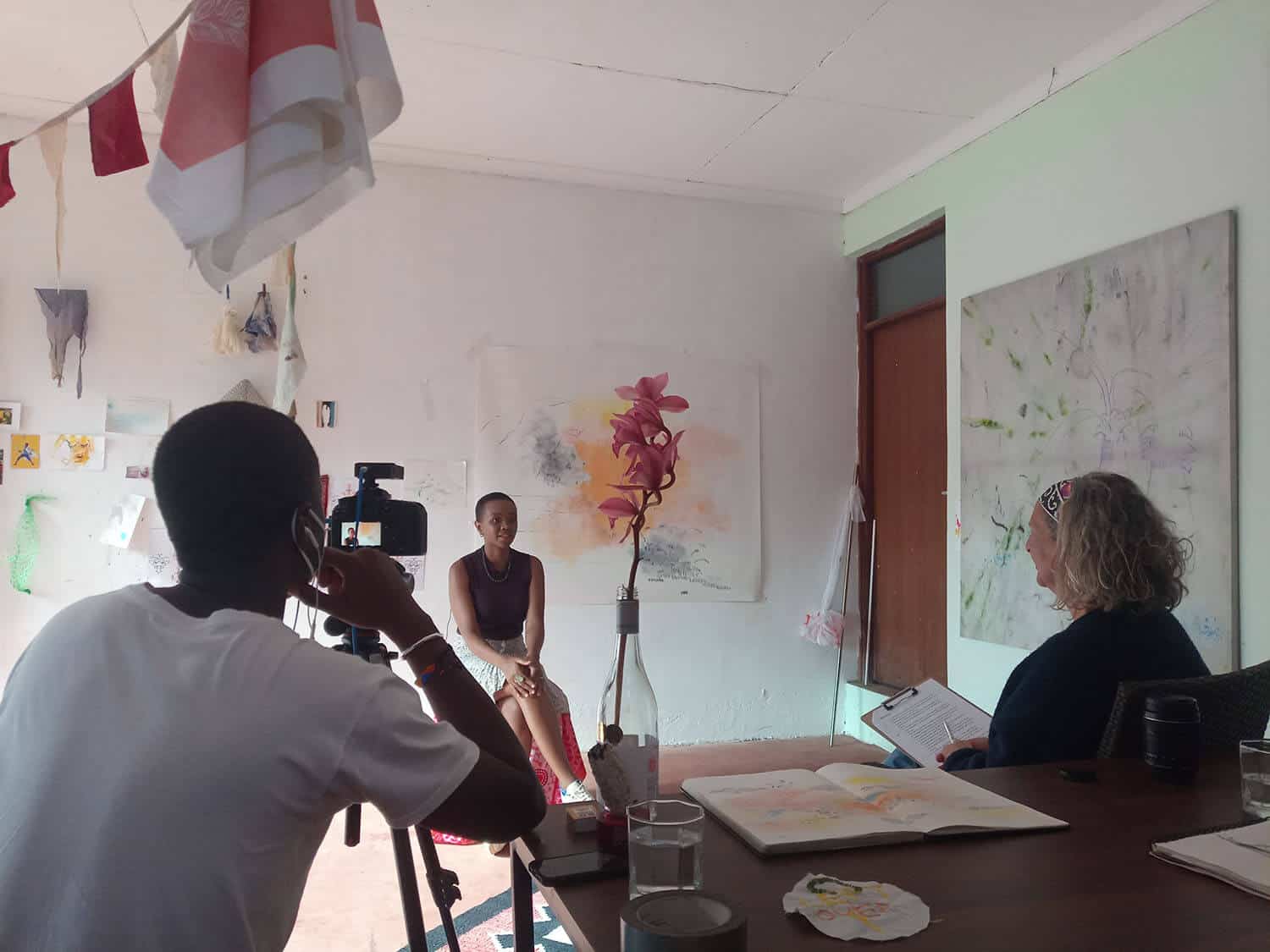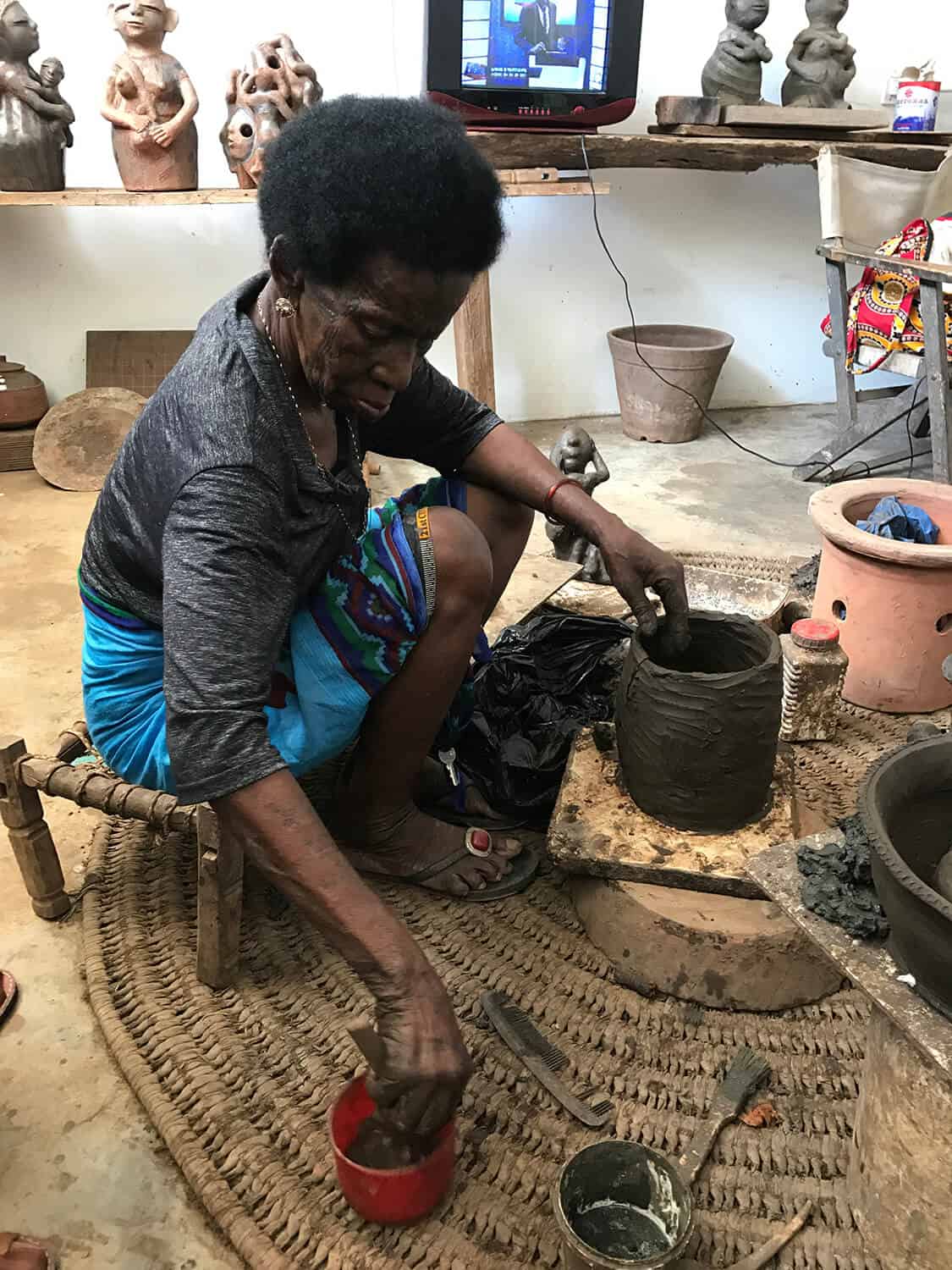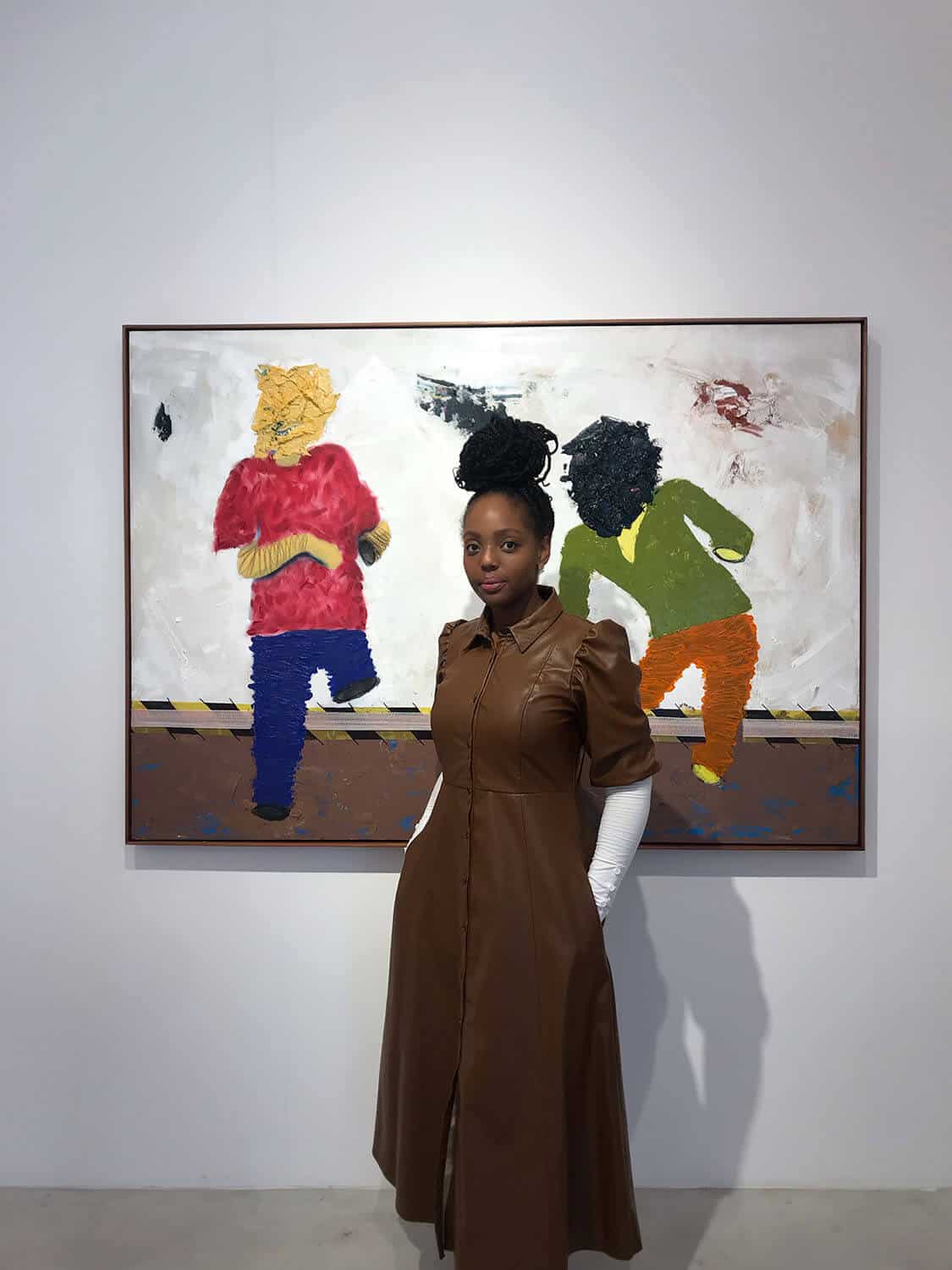*proverb from Juba, South Sudan
Some views on COVID-19, the social justice protests and the art world from Harare, Zimbabwe
Over the past five months, the global community and international art world appeared to be united in sharing their challenges facing the COVID-19 pandemic, and the more recent social justice protests – both in the real world and online. On the continent, the African contemporary art sector experienced art market mayhem and panic, back-ended by protests. This highlighted some profound insights and opportunities to become part of an effective progressive paradigm in an industry deeply entwined in broader social and historical inequality.
When a crisis strikes, what is your first reaction?
What is the best thing to do?
Who do you turn to?
Where do you get advice?
How do you shape your priorities and
future-proof yourself?
These are the things that everyone around the world, including the art world, had to confront over the cataclysmic five months since the COVID-19 pandemic emerged out of China with catastrophic effect across the globe and mapping significantly onto the leading art epicentres.
A dramatic learning experience but, not for everyone in the same way. Why? Because dealing with crises, dealing with unstable resources, shortages, lack of infrastructure, “making a plan” in impossible situations and worrying about the accessibility of healthcare is something many of us in Africa and the African art world do as part of our daily lives.

Gresham Tapiwa Nyaude, lockdown studio in Harare, Zimbabwe, Africa. © Gresham Tapiwa Nyaude
Art stakeholders in developed economies and art sectors appeared to be succumbing to panic-driven tactics manifested through endless Instagram lives and dissipating tsunamis of webinars and online viewing rooms. Art practitioners on the continent, however, do not have the luxury of panicking. For us in Zimbabwe especially, this crisis was no more than yet another in a procession of nearly impossible situations. These include hyperinflation, internet and electricity cuts, cyclones and droughts not excluding art materials shortages, cash crises and shutdowns, and there are the outbreaks of random diseases like cholera and ebola. Mobilising for crisis becomes second nature and is something everyone in Zimbabwe and many countries on the continent know. COVID-19 became yet one more difficulty to be euphemised as a ‘challenge’, only marginally impacting an already demanding economic climate.
So mobilise we did, approaching the pandemic as a military exercise. Prepare for the worst, assess your needs, analyse your reserves, optimise your resources, make sure that everyone in your battalion is on the same page, that no one gets left behind. As a gallery in a developing country, we do not have the luxury of an arms-length relationship with our artists. Preparing for this crisis meant first and foremost, making sure that all our artists and by extension, their families, were taken care of – provisions, art supplies, access to healthcare. Once that was done, other things became more manageable and as we have never relied on local markets to sustain us, closing doors during the government-mandated lockdown, while not fun was not a deal-breaker Conversely, it was disconcerting to hear how easily gallerists in the developed world were able to maintain the cognitive dissonance required to calmly speak about the hardships of artists “in New York artists are living in really small apartments; they are going crazy…” while at the same time acknowledging that “the collectors have a different perspective, they find it’s a really soulful time to be with family, they are connecting with the landscape or nature…”.1
“In New York artists are living in really small apartments; they are going crazy…” while at the same time acknowledging that “the collectors have a different perspective, they find it’s a really soulful time to be with family, they are connecting with the landscape or nature…
As COVID-19 hit the panic headlines in art news around the end of March 2020, there was no mention of Africa. The needs, experiences and possibility of learning from our experience of managing and adapting to new situations here were not on the radar of the international art media. Tuning into endless webinars by international luminaries I hopelessly searched for even a mention of the African experience. Instead, discussions revolved around arts bailout packages in Germany, the lack of action in the U.K. and U.S. politics around bailouts.
So, as we shut our gallery doors, postponed residencies and scheduled events, we continued to share information with our colleagues in other countries on the continent. We assisted one another by sharing news updates on local situations, helping with the shipping of work and ideas for tactics in this new environment. We extended moral support to one another through the Emerging African Art Galleries Association (EAAGA) – a group started in 2016 as a way of providing knowledge-sharing, synergies and cooperation among young galleries on the continent.

Tabitha Wa Thuku during an in-studio interview, Circle Art Gallery, July 2020.

Agnes Waruguru during an in-studio interview, Circle Art Gallery, July 2020.
It was ironic to hear that blue-chip galleries elsewhere were now discussing “innovative” collaborative practices like resources, knowledge and space sharing with colleagues, when these things have been part of our practice for years.2
When some EAAGA galleries organised to push for press coverage, and writing about the situation in Africa, this proved to be remarkably challenging. Perhaps a story of thought leadership and resilience was not consistent with expectations of news of death and disaster out of Africa, this assumption supported by the W.H.O.’s early predictions for Covid-19 in Africa. When we finally got Artsy to agree to publish an article, the editorial content related to two Western-based art fairs moved online – 1-54 New York and ARCOLisboa.3
In the absence of art fair hype which has been propping up the idea of the juggernaut of African art, we realised how completely invisible our experience was here, despite it being so relevant at this time. The lack of press coverage signifies the reality of how minuscule a portion of the art market Africa actually represents globally.
According to USB Art Market Report 2019,4 only 3% of the total art buyers in the world were of African/Middle Eastern origin (yes, Africa does not constitute a viable category, let alone any country on the continent). Moreover, Africa is not listed as a ‘region’ for galleries participating in art fairs. We are relegated into the category of ‘other’ buyers according to the same report where the 33% includes Eastern Europe, Russia, all of South East Asia and most of South America).5 Our global share of market revenue is lost amongst the 7% of the ‘other’ category, while the U.S., China, U.K., Spain, Germany, France and Switzerland constitutes 93% of the revenue according to the 2020 edition of the same report.6
While Africa is full of exciting potential and presents a successful global future, we compete in an art world which prioritises those who presently can, and have for decades, been paying for art and press
In his review of the 2019 MACBA Talking Galleries for artnet, the writer, Tim Schneider quoted Lerato Bereng from the Stevenson Gallery as saying that “Africa is still, in very real ways, building its art-market infrastructure from the ground up right now.” Being further noted though, that this gives African dealers, artists, and collectors the opportunity to do things differently. She revealed, for instance, that Stevenson Gallery has 11 partners, adding that “their freedom from the creaking status quo suggests that, in the years ahead, we [Stevenson] in more established art markets might do well to pay as close attention to their business decisions as to their artists.” A cautious statement as less than 12 months later the art world was plunged into a cataclysmic reality the likes of which no one has seen in living memory.
While Africa is full of exciting potential and presents a successful global future, we compete in an art world which prioritises those who presently can, and have for decades, been paying for art and press. Our ability to be seen and to succeed remains shaped by the inequalities of access to market and representation. Five months into the crisis artnet finally ‘discovered’ Africa and asked if COVID-19 had impacted on our market – five months after their daily reporting on the crisis.7 Poignantly in a world also aflame with social justice protest, they did not think it was worth asking what galleries on the continent felt about that or the impact on us.
When the social justice protests erupted, triggered by the gruesome murder of George Floyd at the hands of the police in Minneapolis, our solidarity with the African American community and art community, in particular, was a given a measure of consideration to the ‘lived’ experience. The international art establishment stood by and watched until black artists made the point. The point is that the people who have been happy to benefit financially from the artists’ growing recognition in a marginalised art world, were silent when it came to acknowledging their ‘real lives’. The buyer being a spectator of the lived reality of the artist but proclaiming a sense of righteousness when purchasing a canvas or a photograph depicting social injustice experienced by those artists. The ethos for me was best crystalised in an Instagram post by a young U.S. based artist, Devin Johnson, which read “To all those art collectors/dealers/gallerists/schools out there… You can’t buy us and not support us. I don’t want your money’.8
Many on the continent welcomed the impetus to drive this conversation home to the established galleries and museums internationally, these institutions had to be bullied into expressing solidarity with the protests. The situation made publicly visible the glass ceilings that we face, artists, galleries and start-up art fairs alike. We are outsiders and marginalised when engaging with international markets, This is what we have been fighting for, recognition and equal standing.

Reinata Sadimba at work in the studio in Mozambique. Courtesy of Arte de Gama Gallery.
When the New York Times published an article titled Black Gallerists Press Forward Despite a Market That Holds Them Back9 about the experience of African American galleries at Art Basel, this resonated with our experiences. The word African could easily have been substituted for the word Black in the title and throughout the piece. Financial privileges tie neatly into race privileges in the art world. Consider this quote “Despite the increasing attention being paid to black artists – many of whom have been snatched up by mega dealers and seen the prices for their work surge at auction – the number of black-owned galleries representing artists in the United States remains strikingly, stubbornly low.” As much as I respect the Art Basel organisation, the participation of African galleries in Art Basel is circumscribed with the occasional exception of two South African galleries.10
A couple of years ago a prominent professional collector calmly explained to me that an artist living and working in Africa could not be priced in the same way as an African born artist, educated and living in the U.K. – that is the calm ‘rational’ reality of the market. It’s just the way it is. While we perceive ourselves as a yet under-priced niche in the market, we are, in fact, a niche the market chooses to undervalue. It is not just the artists who are under-valued, but the African based galleries too. Ours is a continual struggle to gain recognition and professional treatment from international collectors and galleries.
In 2019 I was admonished by a “leading” New York art advisor for pointing out that in the Venice Biennale 2019 curator’s exhibition, more than 60% of the artists were from just six western-based cities – Berlin, Los Angeles, Paris and New York and 95% were represented by galleries exhibiting in Frieze and Art Basel:
“…Venice is completely representative of exactly what it is representative of, and everybody gets that, despite all your handwringing. Venice is absolutely a largely Western vehicle, and it always has historically been as such – until the recent days of fragile triggered political correctness have demanded it be something it is not. Of course, it perpetuates Western tastes and aesthetics. Those are perfectly terrific tastes and aesthetics…..”
The COVID-19 crisis which leads to the #blacklivesmatter protests has helped to articulate the Catch-22 situation of participating in an art world designed to exclude and protect the interests of people who are other than you and places that are not your place. Too often western and at times even established South African galleries poach artists from other African based galleries. Collectors feel entitled to demand exorbitant discounts from these African galleries, a practice they would never get away with when dealing with western-based galleries and dealers. After all, they “know” that we live in countries where people live on a dollar a day and are “desperate” to make a sale to support their families. Emerging African Art Galleries Association was founded as a way to provide moral and practical support to one another in these challenging and often hostile environments and to take a unified stand in our approach to engaging with the international art world.
The need to build a substantial African based art economy and infrastructure, and to invest in developing a local collector base is now more essential than ever before
At the time of writing this, Europe has opened up its borders to international travel, except for citizens of the U.S. – which gets the press for being excluded from travel to Europe due to its irresponsible management of the crisis. But, only 11 African countries will have the ‘privilege’ of being able to travel to Europe, of course, is not mentioned in the media. It is difficult in these circumstances to speak about art from Africa, when so much of how and what we do is dictated by political, cultural and economic gatekeeping and a past and present of inequality and lack of opportunity.
The development of the contemporary art market in Africa has had to negotiate existing systems of inequality in society and the financial economies. Often the inherited colonial infrastructures have remained in place in post-colonial societies. Widespread corruption and the flaunting of obscene wealth accompanied by state control of the masses and police violence is rife. This can account for the growth and demise of billionaires and why the Art Market 2020 lists them by region.11 The need to build a substantial African based art economy and infrastructure, and to invest in developing a local collector base is now more essential than ever before. Economic independence from the west is the solid foundation that we need to secure the intellectual and creative freedom as well and the professional recognition we deserve.
Contemporary art from Africa is part of the momentum that is broadening perspectives, changing mindsets, creating an opportunity for talented voices, a new reading of history. When people talk about “cancel culture” in reference to art, what we need to understand is that failure to make space for other points of view demands action. And it does not mean that we will be left with gaping holes where egregious mediocrities once stood or hung. What will be made is a space for what in international economics is known as R.O.W. (Rest of the World) with a chance for equitable participation for all.
While many artists are still figuring out how to pay rent and survive the pandemic and galleries in Africa and elsewhere in the developing world have to pull themselves up by the bootstraps, blue-chip galleries like Gagosian, Pace, David Zwirner and major artists with factory style studios like Jeff Koons, Dan Colen, Sterling Ruby…and let’s call it rich, white men all are beneficiaries of bailout loans going into millions.12 And some mega dealers are having meetings with Ivanka Trump at the White House to secure their interests.13

EBONY Curated, Assistant curator, Anelisa Mangcu at Lwando Dlamini’s, ‘Triumph’ solo exhibition.
As Artnet says “It’s no exaggeration to say that we are in a moment of history in which all layers of our art systems face active and necessary revision.”14
We are part of a moment where disruption to the art market is met with a technologically supported levelling of the playing field and the social and political consciousness inspired by the protests is creating space for art stakeholders in Africa to advance the cause of equity, representation and independence and also an alternative vision for our participation in the global art market. For too long, we have bought into the intransigence of the reality that success and sustainability of the market for art depends on a handful of high net worth individuals and a handful of blue-chip galleries. Entertaining this paradigm promotes adversarial competition among galleries who believe that they are competing for limited resources on a continent of more than a billion people and hundreds of thousands of artists and less than 100 international galleries across 54 countries.
We can disagree and still love each other unless your disagreement is rooted in my oppression and denial of my humanity and right to exist – James Baldwin
This damaging paradigm makes us turn away from our own audiences and our talents away from the possibility of endorsing local industry. Now there is time and space for young art mediators to recognise and embrace the economic value adding on the continent brings to domestic art sectors – the welfare of artists, art communities and their families.
While James Baldwin’s words “We can disagree and still love each other unless your disagreement is rooted in my oppression and denial of my humanity and right to exist” are a motto for the political paradigm for demanding justice and recognition it is the word of Kwame Nkrumah, that there is no political independence which will ensure that this moment will be a leverage for future flourishing. This is why we cannot follow a path of rampant individualism, which is philosophically at odds with Ubuntu. I call on all the galleries on the continent to extend the hand of support and mentorship to every young aspiring gallerist out there and to prioritise development and support for local collectors in their efforts. I call on every art institution to recognise the importance of the entirety of art ecology in their country and proactively create collaborative and mutually nurturing relationships, which give an opportunity to the new generation. I call on collectors to prioritise buying from galleries and auction houses on the continent and on building awareness of the impact of their collection into their collecting priorities. For too long has the art sector vested their hopes and aspirations with the super-rich, while the inspiration is still the drama of the daily life of the ordinary people. This cognitive dissonance is a crack in the foundation which will topple any tower. Art is of and for everyone. I am because you are. If not now when?
FOOTNOTES
- In Art Basel webinars, Gallerists in time of COVID-19, held on May 7, 2020, Lisa Spellman, founder, 303 Gallery New York.
- ibid Sadie Coles reported that London galleries started an “innovative” initiative when COVID-19 hit, a Whatsapp group to share information.
- https://www.artsy.net/article/artsy-editorial-contemporary-african-art-market-uniquely-positioned-weather-covid-19
- Art Market 2019, An Art Basel & UBS Report, 2019. Prepared by Dr Clare McAndrew Founder of Arts Economics.
- ibid Fig.5.6
- Art Market 2020, An Art Basel & UBS Report. Prepared by Dr Clare McAndrew Founder of Arts Economics.
- Naomi Rea, Will the African Art Market’s Recent Rise Withstand the Shutdown? Dealers Say There’s Reason for Hope https://news.artnet.com/market/african-art-market-shutdown-1894228, July 14 2020
- @davinjohnson, May 31 2020
- Robin Pogrebin, New York Times, published June 21, 2020.
- Goodman, Stevenson (which very recently acquired 13% black ownership) and blank projects (Art Basel Miami Beach), Selma Feriani (Art Basel HK sometimes)
- Fig 6.6 and 6.7 Art Market 2020 ibid
- https://news.artnet.com/art-world/jeff-koons-gagosian-millions-ppp-loans-1892828 “Jeff Koons, whose studio has employed more than 100 assistants at a time, was awarded $1 million to $2 million, according to data released by the Treasury Department. Meow Wolf, the trippy experiential art collective in New Mexico, which laid off more than half of its staff in April, was offered between $5 million and $10 million in funds. Artists Dan Colen, Daniel Arsham, Sterling Ruby, and Tom Sachs were all awarded at least $150,000. Meanwhile, galleries such as Pace, Gagosian (which furloughed its part-time staffers in April), and David Zwirner (which laid off nearly 40 employees this month) all took in between $2 million and $5 million. On the lower end, Blum and Poe, Hauser and Wirth, 303 Gallery, Gladstone Gallery, Jack Shainman Gallery, Lisson Gallery, Luhring Augustine, Marlborough Gallery, Matthew Marks, and Kasmin were each given $350,000 to $1 million.”
- Nate Freeman, Wet Paint: Dealers Secretly Meet With Ivanka Trump at the White House https://news.artnet.com/art-world/wet-paint-art-dealers-at-white-house-1895405
- Ben Vickers, Victoria Ivanova How Will Advanced Technologies Impact the Art World? 3 Takeaways From The Serpentine’s Future Art Ecosystems Report. https://news.artnet.com/opinion/future-art-ecosystems-1893666 July 10, 2020
Valerie Kabov, is an educator, writer and researcher with over a decade of international experience in teaching, training and implementing projects in the field of art and audience engagement and intercultural dialogue.



